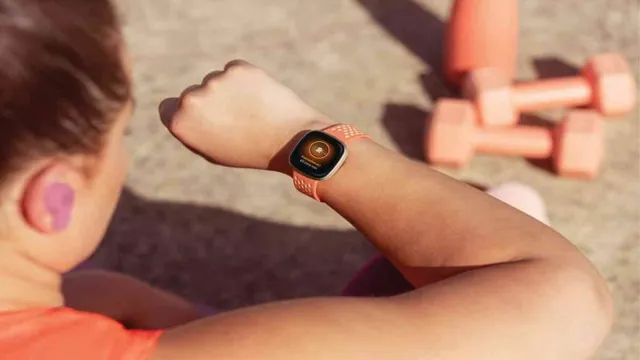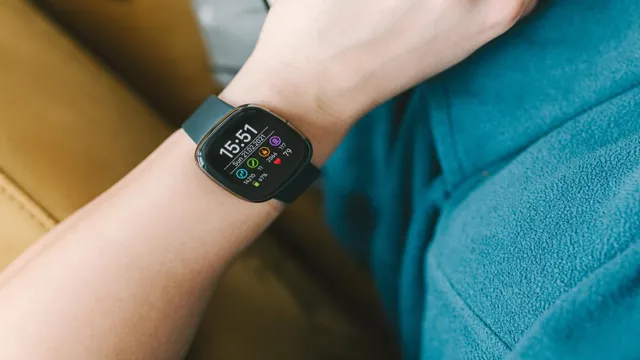Are you tired of constantly replacing your Fitbit? Are you curious about how long these devices are supposed to last? Well, you’re not alone. Many Fitbit users are unsure about the lifespan of their devices and how to maximize their longevity. In this blog post, we’ll dive into the topic of how long your Fitbit should last and provide tips on how to extend its lifespan.
Think of your Fitbit as a car, it requires regular maintenance to keep it running efficiently. So, grab your Fitbit and let’s get started on keeping it going for the long run.
Battery Life
So, you’ve just invested in a Fitbit – the ultimate fitness tracker. But how long should a Fitbit last? Since it’s a wearable device, battery life is a crucial factor. Generally, most Fitbit models can last from 5-7 days on a single charge.
However, this figure may vary with usage and model type. For example, if you have a Fitbit that’s loaded with many features, such as GPS or music playback, the battery life may be shorter compared to a basic tracker. With that said, you can maximize your Fitbit’s battery life by turning off features you don’t use, such as notifications and GPS tracking.
Also, try not to use the heart rate sensor continuously; this feature is battery-intensive, so using it only when necessary can extend the battery life. Overall, a Fitbit with a battery life of at least 5 days is a good choice for anyone looking for a fitness tracker that can last as long as possible between charges.
Average Battery Life of Fitbit devices
Fitbit devices have revolutionized the fitness tracking industry, offering users the ability to monitor their activity and health in real-time. One of the key features of these devices is their impressive battery life, which varies depending on the model. Fitbit products boast an average battery life of 4-7 days, with some models lasting up to 10 days on a single charge.
This is due to the efficient use of power and the ability to optimize battery usage based on the user’s activity level and usage patterns. The battery life is also affected by the use of features like GPS, heart rate monitoring, and always-on displays. Despite this, Fitbit devices are built to last and their battery life is a major selling point for those who want a long-lasting, reliable fitness tracker.

Factors affecting battery life
Battery life is a crucial factor that affects the performance of any device. A battery’s capacity, usage patterns, and environmental conditions are some of the critical factors that determine how long a battery lasts. Over time, a battery’s capacity begins to deteriorate due to several factors like aging, temperature, and usage.
Usage patterns can also impact battery life, as continuously discharging and recharging a battery can lead to wear and tear. Extreme temperatures also affect a battery’s performance, as too much heat or cold can damage the battery’s internal components. It is essential to maintain an optimal usage pattern and expose the battery to moderate temperatures to extend its life.
By taking care of these factors, you can ensure that your battery lasts for an extended period, reducing the need for frequent replacements.
Tips to extend battery life
Battery life is one of the most important aspects of a mobile device. There is nothing more frustrating than having a dead battery when you need it the most. To extend your battery life, there are several things you can do.
One of the easiest things you can do to improve your battery life is to turn off the apps that you are not using. Running multiple apps at once can quickly drain your battery. You should also lower your screen brightness and turn off any unnecessary notifications.
Another tip to extend your battery life is to use airplane mode when you do not need to be connected to the internet. This will turn off all wireless connections and save battery life. Finally, you can also invest in an external battery pack that can provide additional charging when you are on the go.
By following these simple tips, you can extend your battery life and ensure that your mobile device is always charged when you need it.
Durability and Lifespan
Fitbits are a popular wearable fitness technology that help people track their daily activity levels, heart rate, and sleep patterns. One important aspect to consider when purchasing a Fitbit is its durability and lifespan. A Fitbit’s lifespan will depend on how often it is used and how well it is taken care of.
Generally, a Fitbit can last anywhere from two to five years. However, there are several tips to extend the lifespan of a Fitbit. First, it is important to regularly clean the device with a microfiber cloth to prevent buildup of dust and sweat.
Second, avoid exposing it to extreme temperatures or moisture. Lastly, be sure to charge the battery regularly to avoid draining it completely. By taking these simple steps, a Fitbit can last for several years, providing long-lasting tracking of your fitness goals.
Durability of Fitbit devices
Fitbit devices are known for their durability and long lifespan, making them a popular choice among fitness enthusiasts and ordinary people alike. These devices are built to withstand wear and tear, and can survive even under extreme conditions. They are typically resilient to water and dust, making them ideal for outdoor activities or workouts.
In addition to this, most Fitbit devices come with user-replaceable batteries that can last for months before needing replacement. This means that you can use your Fitbit device for an extended period without worrying about it running out of power. Additionally, the materials used in Fitbit devices are sturdy and designed to absorb shock, ensuring that they can withstand accidental drops or impacts.
Overall, Fitbit devices offer an impressive combination of durability, longevity, and reliability, making them an excellent investment for anyone who is serious about maintaining their fitness goals.
Factors affecting the lifespan of Fitbit devices
Fitbit devices have become increasingly popular among fitness enthusiasts and health-conscious individuals. However, the durability and lifespan of these devices are important factors to consider before purchasing one. Several factors can affect the lifespan of a Fitbit device, including the intensity and frequency of usage, environmental conditions, and the model’s build quality.
Users who engage in rigorous physical activities daily will find that their device’s battery life will deplete more quickly and the wear and tear can lead to physical damage. Similarly, exposing the device to water or extreme temperatures can cause malfunctions, affecting the lifespan. However, high-quality models with shock-resistant casings and waterproof features can withstand diverse environments, providing longevity.
Ultimately, the durability and lifespan of your Fitbit device depend on its usage, environmental conditions, and build quality, among other factors.
Tips to extend the lifespan of Fitbit devices
Fitbit devices, durability, lifespan, tips, extendFitbit devices have become popular among fitness enthusiasts due to their ability to track and monitor various physical activities and health metrics. However, to ensure the longevity of these devices, certain precautions need to be taken. Regular cleaning of the device and ensuring that it is kept away from extreme temperatures and humidity can significantly improve its durability.
Additionally, it is essential to charge the device properly and avoid overcharging it to prevent damage to the battery. Another tip is to update the device’s firmware regularly to ensure smooth functioning. By following these simple tips, you can extend the lifespan of your Fitbit device and continue to enjoy its benefits for a long time.
When to Replace Your Fitbit
Fitbits are a great way to track your fitness and health goals, but like any other device that is used frequently, they may need to be replaced over time. So, how long should a Fitbit last? Well, that depends on the model you own and how you take care of it. Generally, Fitbits are built to last between 1 to 3 years.
However, this can vary depending on how often you use it, how well you take care of it and how often you charge the device. If you notice that your Fitbit is not holding a charge or is not accurately tracking your progress, it may be time for a replacement. Don’t forget that technology is always advancing, and newer models of Fitbits may offer additional features that suit your fitness needs better than your current model.
So, always stay up to date and consider upgrading your device when necessary. With proper care and maintenance, your Fitbit can last for many years and help you achieve your fitness goals along the way.
Signs that your Fitbit needs to be replaced
Fitbit ReplacementA Fitbit can be a great investment in your health and fitness, but like any technology, it won’t last forever. There are some signs to look out for that indicate your Fitbit may need to be replaced. If your device doesn’t seem to be recording your steps or workouts accurately, it may be time for an upgrade.
Additionally, if your battery life isn’t as long as it used to be, this could be a sign that the battery is losing its ability to hold a charge. Other signs to watch for include cracked or damaged screens, watch bands that don’t stay securely in place, or buttons that have stopped working altogether. If you notice any of these signs, it may be time to start looking for a replacement Fitbit.
Remember that investing in a new device means you’ll be able to continue tracking your fitness goals and progress towards a healthier lifestyle.
Warranty and replacement options
Fitbit replacementIf you’re wondering when to replace your Fitbit, there are a few things to consider. First, if your device is still under warranty, it may be worth exploring replacement options through Fitbit support. Depending on the specifics of your situation, you may be able to receive a free replacement or a discounted upgrade to a newer model.
Keep in mind that warranties generally cover defects or malfunctions, rather than wear and tear from everyday use. If your Fitbit is no longer under warranty, you might still be able to get a replacement through extended warranty programs or third-party insurance plans. Alternatively, you may choose to upgrade to a newer model or switch to a different brand altogether.
Ultimately, the decision to replace your Fitbit will depend on factors like your budget, your fitness goals, and your personal preferences. By weighing these factors carefully, you can choose the best option for your needs and continue tracking your fitness journey with confidence.
Conclusion and Recommendations
In conclusion, the lifespan of a Fitbit ultimately depends on a variety of factors- from usage frequency to model type. However, like any relationship, it’s important to remember that with proper care and attention, your Fitbit could very well last you a lifetime. So, whether you’re aiming for a marathon or simply trying to hit your daily step goal, make sure to treat your trusty Fitbit like the loyal companion it is- because when it comes to measuring your fitness progress, there’s no better partner in crime.
“
FAQs
What is the average lifespan of a Fitbit device?
The average lifespan of a Fitbit device is around 2-3 years, but it can vary depending on the model and usage.
Can a Fitbit battery be replaced and how often should it be done?
Yes, a Fitbit battery can be replaced. The recommended time to replace it is every 2-3 years or when the battery life starts to significantly decrease.
Is it normal for a Fitbit to have shorter battery life over time?
Yes, over time a Fitbit’s battery life may decrease due to usage and wear and tear.
How can I optimize the battery life of my Fitbit?
To optimize the battery life of your Fitbit, you can adjust settings like screen brightness and notifications, turn off features like always-on display, and regularly update your Fitbit software.
